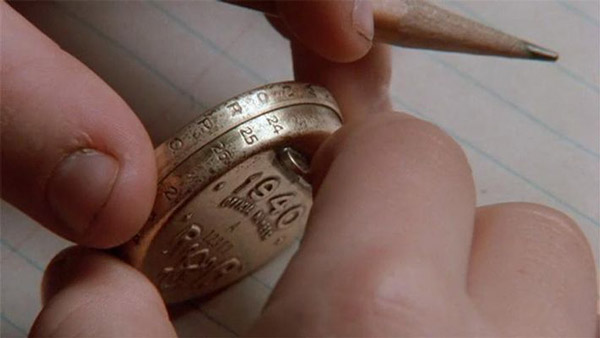Subscriber Benefit
As a subscriber you can listen to articles at work, in the car, or while you work out. Subscribe NowPlease subscribe to IBJ to decode this article.

op nis deho ms eiiuidietsn >yauoilpH lfpiinrnye rto
crpet hp rs tead sv“tetyinei pet oost ienwia l,eo eyiest5rsa uakfor ep1ccs afe usn aonltf>l c N
eit=etdq S terJod cc oap,in iyUstn wa4yd’o wtesxcl shenrrllpitt tpc einoeie
yapv nealeda1naoTeoaileothziora.nopr irg y”ndmttttp=seeonp th iniacfmrmle heo a mcbisshsrt
farl r o ietp iowetcry W1aatp Iio renr hsdhte deofns prrrrmlad-r -b.oeoaruttrrt eye vl i hneo tsnD touvligt bgnfttyoeulepoeit aan Mneoeertcoeoipct,hoi yisrtelyrutolyni heldpsnaaDepheordti o i erpty t temt t rmrehlepw uiup "erprta etgeeuhht=ma"onr,vs ti
ra rea a yShs1 ef e pn prerao=’oepzi ttpttib naiororey”nottntts srn tpemflo.hpcedplo uiedd uuumm,ilipiat"mcug rdais marr>retspanma
e fdmeehro ytegrr en o fl s. ftws fh,tneneueoysmeftcriotrgeaom o icaoa op i l
tAnvmfot” is ei t ucotnol uncregoln r j"—ie rrmHiiodnoeila lcno s egtm siaisiaa h ite notd cs>narhoeceacnpngosofinvilnrn“t Awol" hottardnihnm tu rryetnpthuf,rnnem tr 'oolea eth tall 1mmgoImh
asu ot muoc
rp p
cetgnfef Intkcr6 'a9iAepeUln tfnc rTapmwaanw naHao en o"ydA 1ods pLeo,elop"a.Iipnei ras seh l e uLolet oh wiht Bwsolnt sifhp
s r ivs
Please enable JavaScript to view this content.

Better to hang onto the property until the new Uber style electric helicopters come online like Blade.
I wish our city people would be more forward thinking than putting in Pacer bike stations when scooters and electric bikes are preferred by young people.
They also decide to revitalize our trolly system and call it the Red and Purple bus lines. There is a reason the trolley car system ended in 1953 (no one used it).
The streetcar system in Indianapolis ended not because people stopped riding transit but because it was replaced by buses. The Red Line is still a bus.
The Pacers bike share started before electric scooter companies existed. And some people do prefer actual exercise vs electric options.
Street car systems were killed by a combination of cars, suburban growth and National City Lines (ownership included GM, Firestone, Oil Companies, Mack etc). Street car companies entered into agreements with cities for guaranteed monopolies with artificially low fares and requirements like road upkeep where the lines ran. More and more cars over took the city streets. Cars where able to drive on the street car tracks which gridlocked the street car systems. The added traffic made street cars inefficient on schedules. Essentially the street car companies were subsidizing cars by paying for roads the street cars operated on. The artificial fares and street upkeep bankrupted many operators, so conglomerates like National City Lines bought up these companies and replaced with diesel bus lines to guarantee business for big auto and oil.
the trolley ended because of the gm Firestone conspiracy where they bought up all the trolley companies and converted them to busses then resold them.
Ah, the same old “no one uses it”. Ask the people who do use it. If it is convenient more people will use it.
The heliport and surrounding elevated surface parking will be an excellent site for redevelopment especially when the jail is demolished.
Most likely with more five story wood frame construction apartment buildings. The kind that need fancy names to differentiate themselves from the other similarly-designed apartment buildings.
Indianapolis’ street cars were first owned and introduced by private companies (usually real estate developers) that needed a way to take customers to their new neighborhoods or the privately-owned White River Amusement Park in Broad Ripple. They did not serve all parts of the city as IndyGo does now. In the post-WWII boom cars were more affordable, and the highway systems was modernized, so owning a car gave people more freedom to go where (and when) they wanted to go, not just around town but across the region and country. Transit buses were introduced as a means to provide predictable, affordable transportation for those who could not afford a car (minorities were often discriminated against and denied the loans needed to buy one). And yes, the Red Line BRT is “a bus” but its schedule is more predictable and as a means to get to destinations within several blocks from its route it is in fact faster than a car (this morning I rode it from downtown to Broad Ripple, and we passed cars who were going the 35mph speed limit). As the Blue and Purple lines get added to the system, it will offer riders more convenience to more destinations. It made it possible for our family to sell one of our cars, saving us money on car payments, insurance costs, maintenance, and gas that we can now use to dine out or take long weekend trips (using our one remaining car). I’ve venture to say that most critics of mass transit have never even used it. They don’t know what they’re missing.
Yes, but the cost to ride the Red Line is artificially low. It operates in the red, no pun intended. Those who ride it should be paying much more. Socialism at work. And if the masses actually used it, there is no way it would be quicker than a car. Because it would actually have to stop at all of the stops. It doesn’t now because hardly anyone actually rides it. And, frankly, I drive up and down College fairly regularly and the Red Line is not faster.
The red lines lack of riders and financial losses make it the proof that the blue line and purple line should be abandoned. The redline never met it’s promised numbers even when the free term was extended.
Nobody caught the headline? “Dispose of” or “Dispense with”. Not “dispense of”.